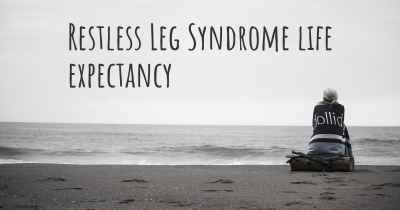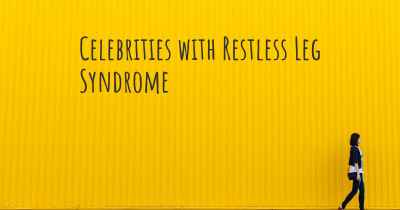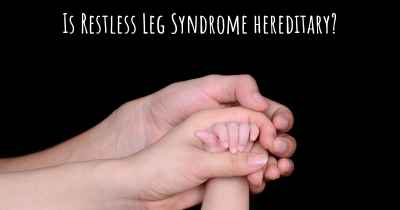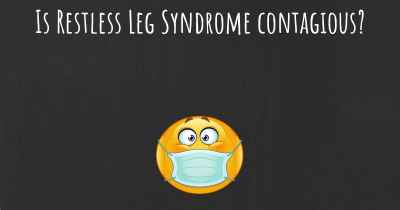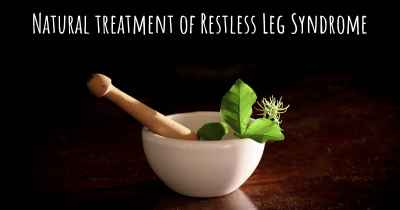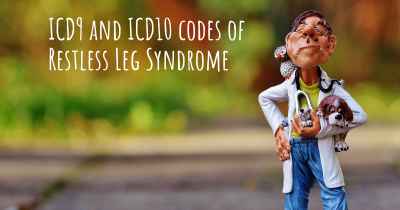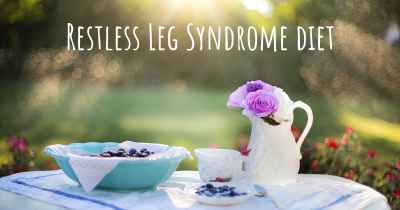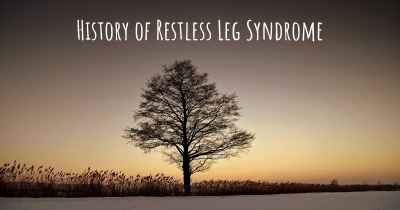Living with Restless Leg Syndrome. How to live with Restless Leg Syndrome?
Can you be happy living with Restless Leg Syndrome? What do you have to do to be happy with Restless Leg Syndrome? Living with Restless Leg Syndrome can be difficult, but you have to fight to try to be happy. Have a look at things that other people have done to be happy with Restless Leg Syndrome

Living with Restless Leg Syndrome
Restless Leg Syndrome (RLS) is a neurological disorder characterized by an irresistible urge to move the legs, often accompanied by uncomfortable sensations. Living with RLS can be challenging, but with proper management and lifestyle adjustments, it is possible to minimize its impact on daily life. Here are some strategies to help you live with Restless Leg Syndrome:
1. Seek Medical Advice
If you suspect you have RLS, it is crucial to consult a healthcare professional for an accurate diagnosis. They can help determine the severity of your condition and recommend appropriate treatment options. RLS can be a symptom of an underlying medical condition, so it's important to rule out any other potential causes.
2. Understand Your Triggers
Identifying triggers that worsen your RLS symptoms can be helpful in managing the condition. Common triggers include stress, caffeine, nicotine, certain medications, and lack of sleep. Keep a journal to track your symptoms and potential triggers, and discuss them with your healthcare provider to develop a personalized management plan.
3. Adopt a Healthy Sleep Routine
Getting enough sleep is crucial for managing RLS symptoms. Establish a regular sleep schedule and create a relaxing bedtime routine. Avoid stimulating activities, caffeine, and heavy meals close to bedtime. Keep your bedroom cool, dark, and quiet to promote a restful sleep environment.
4. Engage in Regular Exercise
Regular physical activity can help reduce RLS symptoms. Engage in moderate exercise such as walking, swimming, or cycling for at least 30 minutes most days of the week. However, avoid intense workouts close to bedtime, as they may exacerbate symptoms. Consult your healthcare provider before starting any new exercise regimen.
5. Practice Stress Management
Stress can worsen RLS symptoms, so it's important to find effective stress management techniques. Explore relaxation techniques such as deep breathing exercises, meditation, yoga, or tai chi. Engaging in activities you enjoy, such as hobbies or spending time with loved ones, can also help reduce stress levels.
6. Maintain a Balanced Diet
While there is no specific diet for RLS, maintaining a balanced and nutritious diet can contribute to overall well-being. Ensure you consume adequate amounts of iron, folate, magnesium, and vitamin D. Consider consulting a registered dietitian to help optimize your diet and address any deficiencies.
7. Create a Comfortable Sleep Environment
Make your sleep environment as comfortable as possible to minimize RLS symptoms during the night. Use comfortable bedding, invest in a supportive mattress, and consider using pillows to elevate your legs. Experiment with different sleep positions to find what works best for you.
8. Explore Medication Options
If lifestyle changes alone are not sufficient, your healthcare provider may recommend medications to manage RLS symptoms. These may include dopamine agonists, anticonvulsants, or opioids. However, medication should always be discussed with a healthcare professional, as they can have side effects and interactions with other medications.
9. Seek Support
Living with RLS can be challenging, both physically and emotionally. Seek support from friends, family, or support groups who understand your condition. Sharing experiences and coping strategies with others can provide valuable insights and emotional support.
10. Stay Positive
Remember that RLS is a manageable condition, and with the right approach, you can lead a fulfilling life. Stay positive, focus on self-care, and be patient with yourself as you navigate the challenges of living with Restless Leg Syndrome.
Disclaimer: The information provided here is for informational purposes only and should not replace professional medical advice. Always consult a healthcare professional for personalized guidance and treatment options.
Posted Feb 27, 2017 by John 1020
